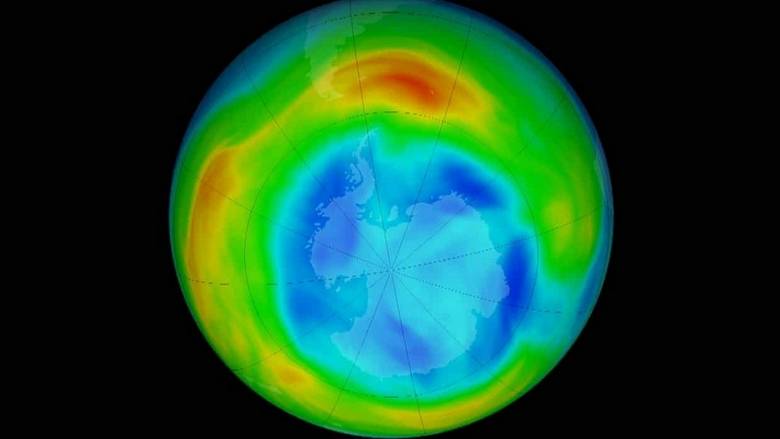
The main reason behind the closure of this big Ozone layer in Artic is explained inside
The European Union’s Copernicus Atmosphere Monitoring Service (CAMS) recently announced that a hole in the Arctic ozone layer has been healed. This hole in the ozone layer was believed to be the biggest reported hole so far.
The unprecedented 2020 northern hemisphere #OzoneHole has come to an end. The #PolarVortex split, allowing #ozone-rich air into the Arctic, closely matching last week's forecast from the #CopernicusAtmosphere Monitoring Service.
More on the NH Ozone hole➡️https://t.co/Nf6AfjaYRi pic.twitter.com/qVPu70ycn4
— Copernicus ECMWF (@CopernicusECMWF) April 23, 2020
The report said that the closure of the Ozone hole happened because of the phenomenon ‘polar vortex’. It had nothing to do with the decreased pollution levels due to COVID-19 lockdown across the world.
The scientists at German Aerospace Center believed that the hole in the North Pole’s ozone layer had emerged first in February 2020. It later reached the maximum extension of around 10 lakh square kilometre.
Read more: Why death rate due to COVID 19 is higher in some countries?
Importance of the ozone layer
We all know the importance of the Ozone layer. We are studying about it since childhood . The ozone layer is basically a molecule of three oxygen atoms which is found mainly in the upper atmosphere, known as the stratosphere. It is somewhere between 10 to 50 kilometre above the earth’s surface. Ozone is present in the air in low concentrations. Even where this layer is thickest, there are not more than a few molecules of ozone for every million air molecules.
Ozone layer absorbs the harmful ultraviolet radiations from the sun. It actually eliminates a big threat to life forms on earth. Ultraviolet rays can lead to skin cancer and other diseases and deformities in animals and plants.
What is the ozone hole?
Actually, there is not really a hole. Ozone hole means that the concentration of ozone becomes extremely low in certain months in a specific region in the stratosphere.
Ozone holes are a common thing above Antarctica which takes place every year in the month of November, October, and September. These holes are credited to happen because of special chemical and meteorological conditions that arise in the South pole. It can reach sizes of around 20 to 25 million.
These holes were also found over the North Pole but because of the warmer temperatures, the depletions are smaller in these regions. Before 2020, the last sizable Arctic ozone hole was reported in 2011.
Read more: Why 24 is pleasant AC temperature? Can it reduce risk of COVID 19, find out
This year the ozone layer was massive in the North Pole region because of the unusual atmospheric conditions including the lower temperature in the stratosphere.
A European Space agency reported that the main reason for ozone depletion could be sunlight wind fields, cold temperatures below 80 degrees Celsius and substances like CFC (chlorofluorocarbons).
Although the temperature in Artic ocean doesn’t usually fell as low as Antarctica, this year, powerful winds flowing near the North pole trapped cold air within, this is called the polar vortex.
Have a news story, an interesting write-up or simply a suggestion? Write to us at info@oneworldnews.com








